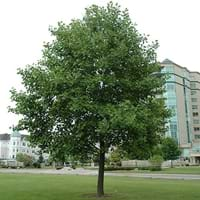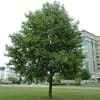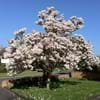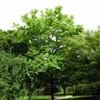Life Span
Perennial
Annual and Perennial
Type
Tree
Bulb or Corm or Tuber
Origin
Northeastern United States, Mid-Atlantic United States, Southeastern United States, Central United States
Central America, South America
Types
Ardis, Arnold, Aureomarginatum
Vine, Flowering plant
Number of Varieties
Not Available
Habitat
Bluffs, low mountains, Moist Soils, Woodlands
All sorts of environments, Along Railroads, Banks, Moist Ditches, Roadsides, rocky banks of streams
USDA Hardiness Zone
5-9
10-13
Sunset Zone
1a, 1b, 2a, 2b, 3a, 3b, 4, 5, 6, 7, 8, 9, 10, 11, 12, 14, 15, 16, 17, 18, 19, 20, 21, 22, 23
21,22
Habit
Pyramidal
Vining/Climbing
Minimum Width
Not Available
Flower Color
Orange, Light Yellow
Purple, Rose
Flower Color Modifier
Bicolor
Bicolor
Fruit Color
Lime Green, Brown
Not Available
Leaf Color in Spring
Green, Light Green
Purple, Dark Green, Black
Leaf Color in Summer
Green
Light Green
Leaf Color in Fall
Yellow, Light Yellow, Yellow green
Several shades of Green
Leaf Color in Winter
Not Available
Light Green
Leaf Shape
Irregular
Acicular
Plant Season
Spring, Fall
Spring, Summer, Fall, Winter
Sunlight
Full Sun, Partial Sun
Full Sun, Partial Sun
Growth Rate
Medium
Very Fast
Type of Soil
Clay, Loam
Clay, Loam, Sand
The pH of Soil
Acidic, Neutral
Acidic, Neutral, Alkaline
Soil Drainage
Average
Well drained
Bloom Time
Late Spring
Late Spring, Early Summer, Summer, Late Summer, Early Fall, Fall, Late Fall
Tolerances
Soil Compaction
Drought
Where to Plant?
Ground
Container, Ground
How to Plant?
Seedlings
Cuttings, Leaf Cutting, Tuber propagation
Plant Maintenance
Low
Medium
Watering Requirements
Do Not over Water, Keep the ground moist but not water-logged, Requires regular watering
Keep the Soil well drained, Needs very little water
In Summer
Ample Water
Lots of watering
In Spring
Moderate
Moderate
In Winter
Average Water
Average Water
Soil pH
Acidic, Neutral
Acidic, Neutral, Alkaline
Soil Type
Clay, Loam
Clay, Loam, Sand
Soil Drainage Capacity
Average
Well drained
Sun Exposure
Full Sun, Partial Sun
Full Sun, Partial Sun
Pruning
Prune ocassionally, Remove dead branches
Remove damaged leaves, Remove dead branches, Remove dead leaves
Fertilizers
All-Purpose Liquid Fertilizer, fertilize in spring, Fertilize the soil instead of direct applying, Mulch
All-Purpose Liquid Fertilizer
Pests and Diseases
fusarium canker, nectria canker, yellow-poplar weevil
Red blotch
Plant Tolerance
Soil Compaction
Drought
Flower Petal Number
Not Available
Single
Foliage Texture
Coarse
Coarse
Foliage Sheen
Matte
Matte
Attracts
Birds
Aphids, Beetles, Cutworms, Insects, Mites, Whiteflies
Allergy
no allergic reactions
Abdominal pain, allergic reaction, Nausea, Skin rash, Twitching of face
Aesthetic Uses
Showy Purposes
Not Used For Aesthetic Purpose
Beauty Benefits
Not Available
Not Available
Environmental Uses
Shadow Tree, Shelter for wildlife
Air purification
Medicinal Uses
Arthritis, Digestion problems, Fever, Inflammation, Wounds
Cures constipation, Fiber, Low calories, lowering blood pressure, Potassium, ß-carotene, Vitamin A, Vitamin C
Part of Plant Used
Whole plant
Leaves, Root, Shoots, Stem, Tuber
Other Uses
Food for animals, Grown for shade, Used as Ornamental plant, Used in Furniture
Starch, Used As Food, Used as Ornamental plant
Used As Indoor Plant
No
Sometimes
Used As Outdoor Plant
Yes
Yes
Garden Design
Feature Plant, Shade Trees, Street Trees
Container, Edible, Groundcover, Hanging Basket, Herb / Vegetable, Mixed Border, Rock Garden / Wall, Vine
Botanical Name
LIRIODENDRON tulipifera
IPOMOEA batatas 'Blackie'
Common Name
Tulip Poplar, Yellow Poplar
Blackie Sweet Potato Vine, Sweet Potato Vine
In Hindi
ट्यूलिप पेड़
शकरकन्द
In German
Tulpenbaum
Süßkartoffel
In French
tulipier
Patate douce
In Spanish
árbol de tulipán
Ipomoea batatas
In Greek
δέντρο τουλίπα
Sweet potato
In Portuguese
árvore de tulipa
Batata-doce
In Polish
tulipanowiec
Wilec ziemniaczany
In Latin
Tulipa arbore
Ipomoea batatas
Phylum
Tracheophyta
Tracheophyta
Class
Magnoliopsida
Magnoliopsida
Order
Magnoliales
Solanales
Family
Magnoliaceae
Convolvulaceae
Genus
Liriodendron
Ipomoea
Clade
Angiosperms, Magnoliids
Angiosperms, Asterids, Eudicots
Tribe
Not Available
Not Available
Subfamily
Not Available
Not Available
Number of Species
Not Available
Season and Care of Tulip Tree and Sweet Potato Vine
Season and care of Tulip Tree and Sweet Potato Vine is important to know. While considering everything about Tulip Tree and Sweet Potato Vine Care, growing season is an essential factor. Tulip Tree season is Spring and Fall and Sweet Potato Vine season is Spring and Fall. The type of soil for Tulip Tree is Clay, Loam and for Sweet Potato Vine is Clay, Loam, Sand while the PH of soil for Tulip Tree is Acidic, Neutral and for Sweet Potato Vine is Acidic, Neutral, Alkaline.
Tulip Tree and Sweet Potato Vine Physical Information
Tulip Tree and Sweet Potato Vine physical information is very important for comparison. Tulip Tree height is 1,830.00 cm and width 1,070.00 cm whereas Sweet Potato Vine height is 15.00 cm and width Not Available. The color specification of Tulip Tree and Sweet Potato Vine are as follows:
Tulip Tree flower color: Orange and Light Yellow
Tulip Tree leaf color: Green and Light Green
Sweet Potato Vine flower color: Purple and Rose
- Sweet Potato Vine leaf color: Purple, Dark Green and Black
Care of Tulip Tree and Sweet Potato Vine
Care of Tulip Tree and Sweet Potato Vine include pruning, fertilizers, watering etc. Tulip Tree pruning is done Prune ocassionally and Remove dead branches and Sweet Potato Vine pruning is done Remove damaged leaves, Remove dead branches and Remove dead leaves. In summer Tulip Tree needs Ample Water and in winter, it needs Average Water. Whereas, in summer Sweet Potato Vine needs Lots of watering and in winter, it needs Average Water.





